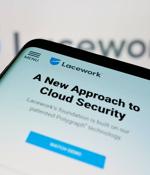Security News

According to a comprehensive market report by MRA, the cloud security market is expected to reach $123.3 billion by 2032 at a CAGR of about 24.4%. As a result of this emerging market trend, cloud security players will be aiming to provide more cloud security service packages for their customers. From the MRA report, some factors that will fuel the cloud security market within the forecast period include the growing threats of cyber-attacks on cloud data and the need for cloud security solutions to protect the confidential data saved on the cloud from unauthorized access.

Organizations continue to shift workloads to the cloud at a rapid pace to achieve faster time to market, increased responsiveness, and cost reductions. With the majority of organizations expected to have more than half their workloads in the cloud within the next 12-18 months, it is no surprise that cloud security continues to remain a top concern.

During AWS re:Inforce, Amazon executives emphasized how important access control is when it comes to cloud security and why IT leaders need to ask who has access to what and why. The executives emphasized the importance of enabling multi-factor authentication and blocking public access, with Kurt Kufeld, vice president of AWS platform, going as far as to say it "Will absolutely save lives."

Organizations are struggling to sufficiently secure new cloud environments implemented during the pandemic, while maintaining legacy equipment and trying to adapt their overall security strategy to the evolving landscape, according to a Proofpoint study released in collaboration with The Cloud Security Alliance reveals. "In the wake of COVID-19, organizations substantially accelerated their digital transformation initiatives to accommodate a remote workforce." said Hillary Baron, lead author and research analyst at CSA, the world's leading organization in defining standards, certifications, and best practices to help ensure a secure cloud computing environment.

Cloud security is a challenge likely to keep a lot of IT professionals awake at night. Agents will cover security scanning, software patching, configuration, general system monitoring and system restarts/reboots.

Cloud security company Lacework has laid off 20 percent of its employees, just months after two record-breaking funding rounds pushed its valuation to $8.3 billion. A spokesperson wouldn't confirm the total number of employees affected, though told The Register that the "Widely speculated number on Twitter is a significant overestimate."

Autodesk needed scalable and secure cloud security to build new applications and extend internal data centers. Fortinet's Adaptive Cloud Security enabled Autodesk to implement a scalable, secure VPC model that would both satisfy the north-south firewall requirement and facilitate minimal latency for east-west traffic.

Autodesk needed scalable and secure cloud security to build new applications and extend internal data centers. Fortinet's Adaptive Cloud Security enabled Autodesk to implement a scalable, secure VPC model that would both satisfy the north-south firewall requirement and facilitate minimal latency for east-west traffic.

Learn how you can simplify security management, ensure full visibility, and achieve broad protection across your workloads and applications. The post The Key to Optimizing Cloud Security on AWS...

Autodesk needed scalable and secure cloud security to build new applications and extend internal data centers. Fortinet's Adaptive Cloud Security enabled Autodesk to implement a scalable, secure VPC model that would both satisfy the north-south firewall requirement and facilitate minimal latency for east-west traffic.